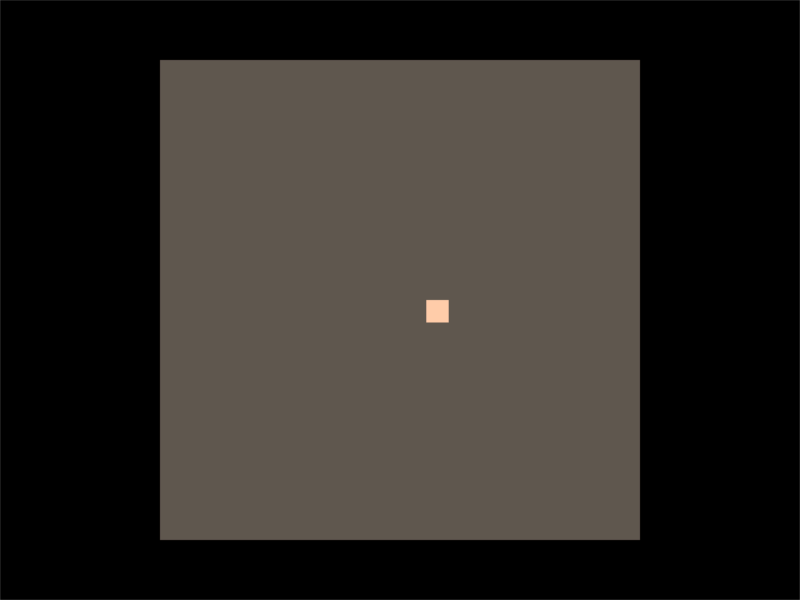PICO-EC aims to provide very basic and simple support for Scenes, Entities and Components within PICO-8.
-
The library offers a simple solution to creating custom objects with init, update and draw cycles that run off of the main application states without having to manually maintain and direct their lifecycles.
-
Objects can then be manipulated through custom defined behaviours. This allows for easy abstraction of generic behaviours and properties.
-
The library itself doesn't ship with any default behaviours, however a selection of some that I think may be useful, including sprites, animations, transforms and physics can be found here. [To be added]
PICO-EC currently sits at 784 tokens, although this isn't currently particularly optimised.
Like any PICO-8 library, integrating this library into your cart is as simple as copy/pasting the source into the top of your code (I recommend the top in order to avoid problems with object ordering).
Getting started with PICO-EC aims to be very simple and easy. Here's an example showing how to create a scene with a default entity added.
local firstScene = factory.createScene()
local firstEntity = factory.createEntity()
mainScene = firstScene
mainScene:addEntity(firstEntity)Simple, right? In order for your scenes to run correctly however, you do of course need to hook them up into your main application lifecycle as follows!
function _init()
mainScene:init()
end
function _update()
mainScene:update()
end
function _draw()
mainScene:draw()
endFrom here, the currently active scene will cycle through all of it's added entities and call the relevant lifecycle functions on them. The entities in turn will call these functions on their added components.
Now that's all well and good, but without any behaviours, nothing's actually going to happen, so let's create some custom behaviours to get a rectangle moving on screen.
I think we're going to want to draw a background rect, and a moveable foreground rect. So thinking logically about separation of behaviours, I think we can separate these into 3 separate components:
- Transform
- Rect
- Mover
Creating a custom component is as simple as defining a new table object and calling a function. Your component can simply hold properties to be manipulated and referenced by other components, or it can override some functions on the default component to provide some new behvaiours.
-- Transform
_transformComponent = {
name = "Transform",
x = 0,
y = 0
}
-- Rect
_rectComponent = {
name = "Rect",
transform = nil,
w = 0,
h = 0,
color = 0
}
function _rectComponent:setColor(col)
self.color = col
end
function _rectComponent:init()
self.transform = self.parent:getComponent("Transform")
end
function _rectComponent:draw()
local x = self.transform.x
local y = self.transform.y
local w = x + self.w
local h = y + self.h
rectfill(x, y, w, h, self.color)
end
-- Mover
_moverComponent = {
name = "Mover",
transform = nil
}
function _moverComponent:init()
self.transform = self.parent:getComponent("Transform")
end
function _moverComponent:update()
if (btn(0)) self.transform.x -= 1
if (btn(1)) self.transform.x += 1
if (btn(2)) self.transform.y -= 1
if (btn(3)) self.transform.y += 1
end
With our three primary components now defined, we can bind it all together into our scene down in our main section like so:
-- Main
-- Create scenes and entities
local movingRectScene = factory.createScene()
local backgroundEnt = factory.createEntity()
local playerEnt = factory.createEntity()
-- Create components for background rect
backgroundEnt:addComponent(factory.createComponent(_transformComponent))
backgroundEnt:addComponent(factory.createComponent(_rectComponent))
--Let's set the background's size
backgroundEnt:getComponent("Rect"):setSize(128, 128)
--Let's change the color of the background
backgroundEnt:getComponent("Rect"):setColor(5)
-- Create components for player rect
playerEnt:addComponent(factory.createComponent(_transformComponent))
playerEnt:addComponent(factory.createComponent(_rectComponent))
playerEnt:addComponent(factory.createComponent(_moverComponent))
--Let's set the player's size
playerEnt:getComponent("Rect"):setSize(5, 5)
--Let's change the color of the player
playerEnt:getComponent("Rect"):setColor(15)
mainScene = movingRectScene
mainScene:addEntity(backgroundEnt)
mainScene:addEntity(playerEnt)
function _init()
mainScene:init()
end
function _update()
mainScene:update()
end
function _draw()
mainScene:draw()
end
Let's take a look at how that runs in the console!
Perfect! With that finished, you can go off and start writing your own custom components, entities and scenes to run drive your games!
Whilst I do believe that this library can be quite verbose for very small PICO-8 projects, as your projects reach a higher scale, it can really help to cut down on tokens as your game is driven by many reusable entities and behavioours.
You can find the example code above in the cart folder if you want to load it up into the console and play around with it!
The API documentation for the library can be viewed here.






